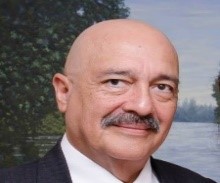El Arte de la Lengua Española – Fine-Tuning Your Perception and Pronunciation of Spanish

“Language production should not get in the way of opportunity and the engagement of foreign-born speakers of Spanish as they struggle to achieve successful inclusion as tourists or immigrants.”
Forward
The problems of poor pronunciation in Second Language Learners of Spanish have interested and intrigued me for many years. Many frustrated students who feel they will never be able to understand Spanish in a natural setting and hundreds of buckets of tears from those who have had to pay an unusually high emotional price for learning how to survive in Spanish-speaking communities, were my main motivation to deal with this subject in an orderly fashion. This workbook is the result of many victories and defeats in the battlefield of Listening and Speaking as well as thousands of hours dedicated to the observation and classification of poor pronunciation patterns by students of Spanish from many different countries.
Teaching phonics has changed greatly in the last 40 years. Unfortunately, not all the innovations in this regard have been beneficial. Many of the things that were taught with great success were dropped in the hasty pursuit of alternatives that initially looked more promising but have not produced results as desirable as originally expected. One of those sensitive “fallen” deities of old is the teaching of the principles of spelling. Spanish spelling has received the most atrocious indifference. Many teachers have told their students things like “This is so complicated to explain that it’s better just to memorize it”. Included in the chapters of your Basic Spanish Language & Culture text are key simplified principles of good spelling that all students of Spanish should master.
Although some of the earlier approaches are still valid and should not be eliminated from our modern classrooms, it is true that many of our paradigms of Schooling still date back to the late 1800’s. The classroom model as the universal approach to standardized teaching available for large populations clearly shows how these paradigms have led us to be successful in creating “factory-model” results that benefit only a few. The behaviourist approaches of Watson and Skinner and the priceless contributions of Dewey, Kolb, Kelly, Mumford and Juch were innovative and interesting in the 1960’s and 1980’s but are quickly becoming outdated as new discoveries about the brain and the way it works have been uncovered. Scientists like Brian Jensen, Porter, Markakis and Gage in 1999, Sutoo and Akiyama in 2003, Tomporowski, also in 2003 and others like Kempermann and Jernigan have developed a new science of the brain: educational neuroscience. They recognize that to better take advantage of recent discoveries about how the brain actually works, we must integrate many different disciplines into the social construct of our classroom environment. In my permanent search for new solutions to the problems of Spoken Spanish, I came upon different theories of Speech and Speech Perception as well as many important contributions to this field from neurologists and linguists. Some of these are mentioned in the chapters ahead.
A true revolution is in the making as brain-based learning becomes the most recently established paradigm. The delicate interplay between emotional states and cognition is something that has not received a much-deserved attention. And we now have new and important evidence that visual and auditory systems can be retrained and “fine-tuned” to improve attention, speech, hearing and reading ability. This is also reflected in the Chapters of this book and explained at greater length as the topic unfolds.
However, more than the different discoveries and new resources available, my students have been my most significant inspiration. Their problems have become my challenges. Their apprehension has turned into my enthusiasm. To them I dedicate these exercises in the hope that, together, we will be setting a foot on new lands waiting to be explored in the thrilling planet of our brain.

